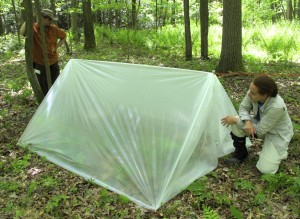Survival Kit – A Suggested Starter List
I am often asked by students or those with whom I am engaged in general conversation, “What is the best survival kit that you recommend?” My response is typically, “There are no ‘best’ survival kits … In fact, I can’t recommend any.” This almost always generates a quizzical look so I then must follow with a more detailed explanation. The short of it is that the “best” survival kit is one that you make that best reflects your intended activities, level of training, and budget. Thus, no off the shelf survival kit can suffice.
For example, someone who typically hikes in the desert likely needs a different inventory than someone who typically hikes in mountains; or someone who skies the backcountry will have different priorities than someone who sea kayaks. Besides, how many survival kits come with such important items (for those, like me, with terrible vision) as prescription eyewear?
In my opinion, the so-called survival kits available on the shelf at the local store of a national retailer are useless in an acute wilderness emergency. They are about as effective as trying to stop a raging house fire with a garden hose.
To be fair, off-the-shelf kits may have some value, but only if you use them as a convenient starting point to then add to it with proper tools and materials.
Personally, I recommend that you simply build your survival kit from scratch starting with six core items. Of course, you can add to it to make it more effective and useful, but even these items will fit into a small, lightweight bag that you can toss into your pack before heading out on your next “‘day hike” which, in the event of an emergency, may help you get you through the night in a variety of conditions.
Basically, these tools will help you view your unintended overnight into more of an inconvenience, rather than a life threatening situation.
1. Knife
 A good fixed-blade knife that is full tang should be in every kit. I carry an old-school Ka-Bar, but I regularly recommend knives by Mora, like the “Bushcraft Forest.” Granted it’s only 3/4 tang and not visually impressive, but it has a great pedigree (a version of it is the standard issue field knife for the Swedish army infantry), it holds comfortable in a woman’s or child’s hand, and it is easy on the budget (variants ranging from $25-45).
A good fixed-blade knife that is full tang should be in every kit. I carry an old-school Ka-Bar, but I regularly recommend knives by Mora, like the “Bushcraft Forest.” Granted it’s only 3/4 tang and not visually impressive, but it has a great pedigree (a version of it is the standard issue field knife for the Swedish army infantry), it holds comfortable in a woman’s or child’s hand, and it is easy on the budget (variants ranging from $25-45).
But you already have a really nice multi-tool? Consider how easily it opens or closes when you have a broken arm. Or consider trying to open when you are moderately hypothermic.
2. Cord
I strongly recommend a 50 foot hank of parachute cord, often simply called “550 Cord.” It has countless uses, from constructing a shelter, to being the string on primitive fire bow, to replacing a broken bootlace. Heck, I’ve even made a fishing fly lure with it. Just make sure that what you buy is “mil-spec,” and not some cheap knockoff. Cost? About 10 cents a foot (even less if you buy more).
3. Plastic
 I love plastic drop-clothe from my local hardware store, at least 2-mil thick and 100 square feet (that is, dimension of about 10′ x 10′ feet). Plastic drop clothe?! Yup, I know that it’s not impressive, but with it I can make a simple shelter in about 60 seconds that will be windproof and waterproof, and is surprisingly warming. Also, I can use it to carry a patient, or secure water, among just many other uses — and a roll of it fits easily in a pack or bag. Cost? Usually less than $3.00.
I love plastic drop-clothe from my local hardware store, at least 2-mil thick and 100 square feet (that is, dimension of about 10′ x 10′ feet). Plastic drop clothe?! Yup, I know that it’s not impressive, but with it I can make a simple shelter in about 60 seconds that will be windproof and waterproof, and is surprisingly warming. Also, I can use it to carry a patient, or secure water, among just many other uses — and a roll of it fits easily in a pack or bag. Cost? Usually less than $3.00.
4. Light Source
Some type of flashlight that ideally is LED and uses lithium batteries. It might help you construct a shelter or gather wood when darkness falls; you could use it to help take care of an injured patient through the night; or you can use it as a signal device. A chemical light is a good alternative (they cost about $1.00 each).
5. Fire Source
Swedish company Light My Fire makes a very good and affordable fire rod (about $10) that when used on the cotton balls and petroleum jelly (that you should also squirrel away in your kit) will literally start a knee high fire in the pouring rain in five minutes! Want to play it safe? Then, consider the $50 for the Ultimate Survival “Delta” storm lighter a good investment — It’s flame is 2,000 degrees and it’s guaranteed in winds up to 70-80 miles per hour.
6. Whistle
 I think that a proper whistle is one of the most under appreciated survival tools. People seem to really believe that yelling, or using their lips and fingers to whistle, is as effective. Yelling works extremely poorly in forest locations, especially when wind, rain, or snow is considered; and whistling isn’t easy if you are extremely ill or have a broken arm.
I think that a proper whistle is one of the most under appreciated survival tools. People seem to really believe that yelling, or using their lips and fingers to whistle, is as effective. Yelling works extremely poorly in forest locations, especially when wind, rain, or snow is considered; and whistling isn’t easy if you are extremely ill or have a broken arm.
The Ultimate Survival “JetScream” is a good choice. It generates an ear piercing 122 decibles, and there is no “pea” in it to jam or freeze (which your spittle can do in the winter). It’s also very affordable at around $10.
This list is certainly not intended to be complete or authoritative, only a starting point to help you begin thinking about your equipment as well as your personal survival issues.
And, without a doubt, any survival kit should not be a substitute for professional training, experience, and judgment.
—————
Do you have any thoughts or suggestions? We would love for you to share them on our Facebook page. Or feel free to Contact Us.
Would you like to learn more about the gear that we suggest, and, better yet, how to use them? Then consider booking a space in an upcoming survival course.

